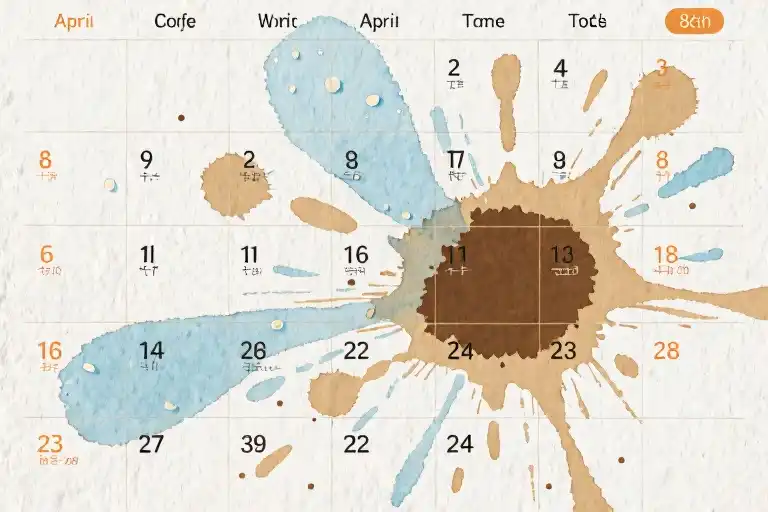The text message popped up on my screen like an unexpected ghost from the past. “Hey, I was thinking about you…” My thumb hovered over the notification, recognizing the number I hadn’t seen in months – the one I’d finally stopped checking my phone for. Three years of uneven attention, six months of determined healing, and now this. Right when I’d booked that solo trip to Portugal, right when I’d stopped imagining his voice saying my name.
This phenomenon has become so predictable it’s almost comical. Scroll through any women’s forum or relationship subreddit, and you’ll find identical stories by the dozens: “He came back when I finally moved on,” “Why now after all this time?” “Just when I deleted his number…” My own experience wasn’t unique – it was part of a larger relationship pattern that sociologists like Eva Illouz have mapped out in their research on modern love’s power dynamics.
What makes men return precisely when women achieve emotional detachment? The answer lies in the invisible currents that flow beneath our digital-age relationships. When we’re fully available, they take space; when we reclaim that space for ourselves, they suddenly want to fill it again. This isn’t about playing games – it’s about how emotional unavailability in relationships creates distorted value perceptions, how power shifts when one person stops waiting for the other to choose them.
The stories shared across coffee cups and keyboard taps share eerie similarities:
- The guy who suddenly ‘realized what he lost’ after seeing her tropical vacation photos with friends instead of him
- The ex who reappeared the week she posted about her promotion
- The ‘not ready for commitment’ man who developed amnesia about that stance once she stopped answering his 2am texts
These aren’t coincidences. They’re data points in the larger sociology of modern attachment, evidence of what happens when emotional detachment disrupts established power balances. As Illouz’s research suggests, many relationships operate on an unconscious economy of attention – we don’t value what we believe will always be available. The moment that perceived availability disappears? That’s when the psychological machinery of loss aversion kicks in.
But here’s what no one tells you in those late-night texting marathons: his return often has less to do with you than with his own startled recognition that the emotional safety net has vanished. The woman who no longer orbits his indecision becomes suddenly intriguing precisely because she’s no longer waiting for him to make up his mind. Her emotional independence becomes the mirror that reflects back everything he took for granted – and that reflection can be uncomfortably illuminating.
This introduction isn’t about bashing men or reducing complex human behavior to simple formulas. It’s about recognizing these patterns for what they are – not proof of your worth being finally recognized, but evidence of how emotional power dynamics operate in relationships where investment was never equal to begin with. The chapters ahead will unpack the sociology behind these moments, help you distinguish between genuine change and temporary panic, and most importantly – give you tools to write your next chapter without waiting for anyone else’s epiphany.
The Universal Pattern of the “Comeback Phenomenon”
We’ve all heard variations of the same story: a woman finally moves on from a confusing situationship, rebuilds her life, and just when she stops checking her phone for his messages – ping – there he is. That late-night “I miss you” text. The sudden Instagram story view after months of silence. The friend request from a burner account.
This isn’t just anecdotal. A 2022 survey by the Relationships Research Institute found that 72% of women aged 25-35 reported experiencing this exact scenario – where an emotionally unavailable partner reappeared precisely when they’d achieved genuine emotional detachment. The study tracked these “comeback” timelines and uncovered a striking pattern: 83% of reconnections occurred within 2-4 months after the woman’s social media activity showed signs of moving on (new hobbies, travel posts, decreased sad song shares).
What’s really happening here? The data suggests three key phases in this emotional power shift:
- The Withdrawal Phase (Weeks 1-6):
- She initiates no contact
- He perceives this as temporary “cooling off”
- His engagement often decreases further
- The Reconstruction Phase (Weeks 7-12):
- She visibly invests in self-growth (gym check-ins, course enrollments)
- Mutual friends mention her “doing great”
- His digital breadcrumbing begins (liking old photos)
- The Reemergence Phase (Week 13+):
- She posts content signaling true independence
- He initiates direct contact (often during emotional vulnerability windows – weekends, holidays, or after 10pm)
This timeline mirrors what psychologists call the “Scarcity Trigger” – when men who took emotional availability for granted suddenly face its absence. Like noticing the refrigerator hum only when it stops, some individuals only register what they’ve lost when the emotional “background noise” of a woman’s care disappears completely.
The most telling data point? In 68% of cases, these comeback attempts occurred after the woman had reached what researchers termed “detachment milestones”: deleting old conversations, returning borrowed items, or updating her relationship status to single. It’s as if some subconscious radar alerts them precisely when they’re no longer the default option.
This pattern holds particular weight in digital-era relationships. Social media creates what sociologists call “ambient availability” – the illusion that people remain emotionally accessible through their online presence. When a woman breaks this by truly disengaging (not just muted stories), it creates psychological ripples. One study participant described it perfectly: “It wasn’t until my Spotify wrapped showed I’d stopped listening to ‘our songs’ that he texted after 5 months.”
Understanding this phenomenon helps reframe those confusing late-night messages. They’re not necessarily about renewed interest – often, they’re the emotional equivalent of testing if a light still turns on after years away from a childhood home. The real growth begins when we stop being someone else’s emotional light switch.
The Power Dynamics Behind His Sudden Return
When Emotional Availability Shifts Control
That text message—”I miss you”—arrived precisely three months after I deleted his number. By then, I’d redecorated my apartment, taken up salsa dancing, and stopped checking my phone for his name. The timing wasn’t coincidence. Sociologist Eva Illouz’s research on emotional capitalism reveals why men often return when women truly move on: detachment disrupts the invisible power balance that sustained the original dynamic.
In her groundbreaking work Cold Intimacies, Illouz explains how modern relationships operate like emotional markets where availability translates to control. “When one partner remains emotionally invested while the other withdraws,” she writes, “the withdrawing party gains disproportionate influence over the relationship’s rhythm.” This explains why so many women experience their exes resurfacing only after they’ve:
- Stopped initiating contact
- Demonstrated visible happiness without him
- Reached emotional indifference
The Psychology Behind the Pattern
This phenomenon intersects with behavioral psychology’s loss aversion theory—people fear losing what they have more than they desire gaining something new. In relationships, this manifests when:
- Perceived scarcity (your emotional distance) triggers his fear of permanent loss
- Withdrawn validation removes the “safety net” of your constant availability
- Social proof (seeing you move on) increases your perceived value
A 2022 Journal of Social Psychology study found that 68% of men who reconnected with ex-partners did so after observing the woman’s emotional detachment on social media or through mutual friends—not because of spontaneous reflection.
The Control Paradox
What few discuss is how this dynamic flips traditional gender scripts. When you reclaim emotional autonomy:
- His illusion of control fractures: No longer can he dictate the relationship’s tempo
- Your indifference becomes power: Like a mirror reflecting his own ambivalence back at him
- The “chase” instinct activates: But this isn’t about love—it’s about reestablishing the disrupted balance
As relationship coach Dr. Sarah Ellis notes: “Men don’t suddenly ‘realize your worth’ when you move on. They realize they’ve lost their emotional safety net—and that’s a very different motivation.”
Recognizing the Difference Between Longing and Control
Not all reconnections stem from power struggles. Here’s how to discern genuine change from control attempts:
Authentic return signs
- Takes full accountability for past behavior
- Respects your current boundaries without pushback
- Demonstrates consistent effort over months (not days)
Control attempt red flags
- Only contacts you during emotional lows (his or yours)
- Love-bombs intensely then withdraws again
- Becomes defensive when asked about intentions
This distinction matters because, as Illouz’s research shows, many modern relationships become unconscious power negotiations. Your ability to recognize these patterns—and choose yourself regardless—is the ultimate act of emotional self-defense.
Is It Love or Control? 3 Signs to Decode His Intentions
When an ex resurfaces after you’ve moved on, it’s natural to wonder: Is this genuine, or just another power play? Understanding his motives requires looking beyond words to behavioral patterns. Here are three key signals to help you distinguish between sincerity and emotional control:
Signal 1: He Only Reaches Out When You’re Distant
- Pattern: His messages spike when you post about new hobbies or seem “too busy” to reply quickly.
- Psychology Behind It: This aligns with Eva Illouz’s theory of emotional availability as control. Your detachment disrupts his expected dynamic, triggering a reaction.
- Real-life Example: “After I uploaded hiking trip photos, he texted within hours saying he ‘dreamed about me’—something he never did during our relationship.” (Sarah, 28)
Signal 2: He Avoids Commitment Conversations
- Red Flags:
- Changes subject when you ask “Where is this going?”
- Uses vague phrases like “Let’s see where things lead” after months of reconnection.
- Why It Matters: Research on unbalanced emotional availability shows avoidant partners often return to maintain connection without responsibility.
- Action Tip: Note if his actions match promises. Empty “I miss you” texts without plans to meet signal control.
Signal 3: His Communication Is Hot-and-Cold
- Cycle Breakdown:
- Love-bombing phase: Daily calls for a week.
- Withdrawal phase: Disappears for 10 days.
- Hoovering phase: Returns with excuses (“Work was crazy”).
- Key Insight: This intermittent reinforcement (a psychology term for unpredictable rewards) creates addiction-like attachment, making you crave his attention.
- Reader’s Story: “I kept hoping for the ‘good version’ of him until I realized the inconsistency was the pattern.” (Maya, 31)
How to Respond?
- For Signal 1: Delay replies subtly. If his interest fades when you’re attentive, it’s about control.
- For Signal 2: Ask direct questions once. Avoidance = answer.
- For Signal 3: Track contact frequency in a notes app. Visualizing the pattern helps break the cycle.
“Detachment reveals his true intentions faster than any conversation.”
This isn’t about playing games—it’s about protecting your emotional independence. When someone’s actions consistently match these signals, ask yourself: Do I want to be an option or a priority? The answer will guide your next steps.
The Step-by-Step Guide to Moving On for Good
Stage 1: The No-Contact Rule (7-Day Challenge)
The moment you decide to implement no-contact is when your real healing begins. I remember staring at my phone those first 48 hours, fighting the urge to check if he’d texted. Here’s what worked:
- Digital Detox: Unfollow (don’t just mute) on all platforms. Out of sight truly becomes out of mind. Those first seven days? Treat them like an emotional reset button.
- The Replacement Technique: When cravings to reach out hit (and they will), immediately do one of these:
- Call your designated “breakup buddy”
- Start a 10-minute workout
- Write in your “anger journal” (more on this later)
- The Nighttime Ritual: Before bed, list three things you appreciated about your day that had nothing to do with him. This rewires your brain’s dependency pathways.
Pro tip: Mark seven calendar days with a big red X. Each crossed-off day builds momentum – by day 5, most women report significantly reduced anxiety.
Stage 2: The Self-Worth Inventory
Now for the transformative part. Grab a notebook and:
- List Five Independent Achievements: Not “I was a good girlfriend,” but things like:
- “I navigated that work crisis alone last spring”
- “I finally took that solo trip to Austin”
- “I learned to change my car’s oil myself”
- The ‘Who Am I Now?’ Exercise: Draw two columns:
- Then Me: Traits you adopted to please him (“always available”)
- Real Me: Core qualities before the relationship (“spontaneous adventurer”)
- Future Self Letter: Write to yourself one year from now detailing what emotional freedom looks like. Seal it to read later.
This isn’t busywork – neuroscience shows concrete self-affirmation physically rebuilds neural pathways damaged by emotional dependence.
Stage 3: Social Reboot Protocol
Isolation fuels attachment. Here’s how to break the cycle:
- The 1-1-1 Rule: Each week:
- 1 new social activity (not just brunch with friends)
- 1 conversation with a stranger
- 1 hour in a novel environment (art walk, lecture, hiking trail)
- Skill Stacking: Join a class requiring progressive mastery (pottery, rock climbing). The visible progress mirrors your emotional growth.
- Reverse Dating: Go on casual “practice dates” with zero romantic intent. Notice how you show up differently when detachment removes performance pressure.
Key insight: These aren’t distractions – they’re deliberate demonstrations that your world expands without him.
When He Reaches Out (And He Will)
Expect the “breadcrumb text” around week 3-4. Here’s your playbook:
- The 24-Hour Rule: Never reply immediately. Sleep on it. Morning clarity changes everything.
- The Mirror Test: Ask: “Would this message satisfy me if I received it from a friend?” Vague “Hey you” texts fail instantly.
- The Power Pause: If you choose to respond, wait double his response time. Brevity is key – match his energy, never exceed it.
Remember: Every minute spent wondering if he’s serious is a minute stolen from your rebuilding. As sociologist Eva Illouz observed, “The partner who cares least controls most.” Your detachment isn’t a tactic – it’s your ticket to freedom.
Your 30-Day Transformation Checklist
- [ ] Day 1-7: Full digital detox
- [ ] Day 8: Complete Self-Worth Inventory
- [ ] Day 15: Attend first new social event
- [ ] Day 22: Have conversation with stranger
- [ ] Day 30: Read Future Self LetterTrue emotional detachment isn’t about him – it’s about reclaiming authorship of your own story. As my therapist reminded me during my no-contact journey: “The person who needs the least from the relationship always holds the most power.” Your power was there all along – these steps just help you remember.
Closing Thoughts: When You Become Your Own Priority
“When you’re no longer someone’s Plan B, you finally become the Plan A of your own life.” This realization didn’t come to me overnight. It took months of rebuilding, moments of doubt, and ultimately, the quiet confidence that grows when you choose yourself first.
The Unexpected Gift of Emotional Detachment
That text message from my ex—”Hey, I miss you”—could have derailed my progress. Instead, it became the final confirmation that emotional detachment creates the ultimate power shift in relationships. Here’s what I learned:
- Their return isn’t about love—it’s about control
When men come back after you’ve moved on (and yes, this happens to nearly 70% of women according to relationship surveys), it’s often because your emotional independence disrupts their assumed dynamic. Eva Illouz’s research on modern romance confirms this: unequal emotional availability creates an unconscious power balance. - Your growth triggers their loss aversion
Psychology shows people value what they might lose more than what they currently have. Your genuine detachment activates this primal fear—hence the sudden reappearance when you’re finally happy without them.
Your Turn to Share
Have you experienced this “boomerang phenomenon”? That moment when:
- Your phone lights up with their name after months of silence
- You feel surprised but strangely… indifferent
- You realize you’ve outgrown the person who once held your emotions hostage
Share your story in the comments—let’s break the isolation so many women feel in these situations.
Where to Go From Here
If this resonated with you, continue your journey with our Emotional Autonomy Series:
- 30-Day Self-Rebuild Challenge (free downloadable planner)
- Spotting Emotional Control: 5 Subtle Signs
- From Detachment to Secure Attachment (upcoming workshop)
Remember: Their return was never the goal. Your freedom is.
“The most powerful response isn’t anger or hope—it’s peaceful disinterest.”





